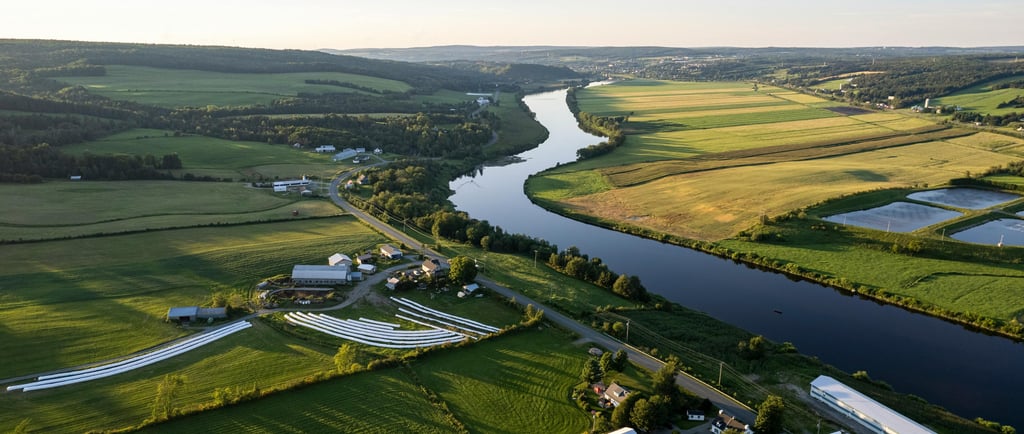What Contractors Should Know About Green Building Certifications
This blog outlines the most important green building certifications, what they entail, and why every contractor should be familiar with them.


Green building certifications are increasingly shaping the construction landscape in the U.S., Canada, and around the world. As governments, developers, and consumers place more value on sustainability, contractors need to understand the significance of these certifications—not only to stay compliant with evolving regulations but also to remain competitive and credible in the marketplace.
This blog outlines the most important green building certifications, what they entail, and why every contractor should be familiar with them. Whether you're a general contractor, a project manager, or a builder specializing in residential or commercial properties, this guide will help you navigate the green building landscape with confidence.
Why Green Certifications Matter
Green building certifications offer third-party validation that a building meets environmental performance standards. These standards typically focus on:
Energy efficiency
Water conservation
Sustainable materials
Indoor environmental quality
Site sustainability
For contractors, being informed about these certifications can:
Improve your credibility and trust with clients
Open doors to new projects
Help avoid regulatory issues
Align your work with local or federal sustainability initiatives
Top Green Building Certifications Contractors Should Know
1. LEED (Leadership in Energy and Environmental Design)
Country: U.S. and international
Administered by: U.S. Green Building Council (USGBC)
LEED is one of the most well-known and respected green certifications globally. It covers different building types—new construction, existing buildings, homes, schools, healthcare, and more.
What Contractors Should Know:
Projects earn points across multiple categories (energy, water, materials, etc.)
Ratings range from Certified to Platinum
Contractors often need to work with LEED Accredited Professionals (LEED APs)
Materials used must comply with LEED standards (e.g., low-VOC paints, FSC-certified wood)
2. ENERGY STAR for Homes and Buildings
Country: U.S. and Canada
Administered by: U.S. EPA / Natural Resources Canada
ENERGY STAR rates energy efficiency. Buildings must outperform standard builds in heating, cooling, lighting, and appliances.
What Contractors Should Know:
ENERGY STAR homes use 10–20% less energy
Requires third-party inspection and verification
Can add significant resale value to a property
Ensures HVAC systems, insulation, and air sealing meet specific benchmarks
3. WELL Building Standard
Country: U.S. and international
Administered by: International WELL Building Institute (IWBI)
WELL focuses on the health and wellness of building occupants, covering aspects like air, water, nourishment, fitness, and comfort.
What Contractors Should Know:
Growing demand in commercial office space and high-end residential
Requires collaboration with architects and designers
Prioritizes low-emission materials and ventilation systems
4. Living Building Challenge (LBC)
Country: U.S. and international
Administered by: International Living Future Institute
LBC is considered the most rigorous green certification. It challenges builders to create net-positive energy, water, and waste structures.
What Contractors Should Know:
Must meet performance standards for 12 consecutive months
Requires use of Red List-free materials (i.e., no toxic chemicals)
Demands high transparency in product sourcing and construction methods
5. BREEAM (Building Research Establishment Environmental Assessment Method)
Country: Canada (limited), U.K., and international
Administered by: BRE Group
BREEAM is a European-based standard but gaining traction in North America, especially for international developers.
What Contractors Should Know:
Similar to LEED but with different scoring methods
Emphasizes lifecycle performance
Often used in commercial and institutional projects
6. Green Globes
Country: U.S. and Canada
Administered by: Green Building Initiative (GBI)
Green Globes is a more flexible, user-friendly alternative to LEED. It allows for partial credit and offers certification for different phases.
What Contractors Should Know:
Ideal for mid-sized projects
Faster and often less expensive to certify than LEED
Requires a Green Globes Assessor for audits
Key Materials and Construction Practices for Green Certification
Regardless of the certification, certain materials and practices consistently contribute to compliance:
Low-VOC adhesives, paints, and coatings
Formaldehyde-free insulation and wood products
Recycled or rapidly renewable materials
Smart HVAC systems
High-efficiency windows and doors
Water-conserving plumbing fixtures
Construction waste recycling programs
Contractors should work closely with suppliers to ensure all materials come with the right documentation (e.g., Environmental Product Declarations, Health Product Declarations).
Tools and Resources for Contractors
LEED Credit Library: Helps understand project requirements.
Green Building Advisor: Offers product reviews and energy-saving tips.
Construction Specifications Institute (CSI): Provides standardized specifications.
BuildingGreen.com: Database of vetted green products.
WELL Faculty and AP Training: Learn how to get certified to work on WELL projects.
Common Pitfalls and How to Avoid Them
Ignoring Certification Requirements Early: Many certifications require planning from the design phase. Contractors must be part of that discussion.
Improper Documentation: Missing or incorrect paperwork can delay certification.
Incompatible Products: Not all green-labeled products meet every certification’s criteria.
Underestimating Costs: While green building can save money long-term, upfront costs and verification fees must be accounted for.
The ROI of Green Certification for Contractors
Higher Bids: Green-certified buildings command higher resale and rental values.
More Projects: Many government and institutional contracts require green standards.
Brand Recognition: Being known for sustainable practices improves your business reputation.
Fewer Callbacks: Better building systems mean fewer post-construction issues.
Green building certifications are no longer optional—they are becoming a necessary part of modern construction. Contractors who understand these systems are better positioned to win projects, deliver quality work, and contribute to a sustainable future. By investing in green training, forming partnerships with knowledgeable suppliers, and choosing compliant products, you’ll future-proof your contracting business for years to come.
Whether you’re bidding on a LEED-certified project or exploring Green Globes for a small commercial job, the time to build your green knowledge is now.
